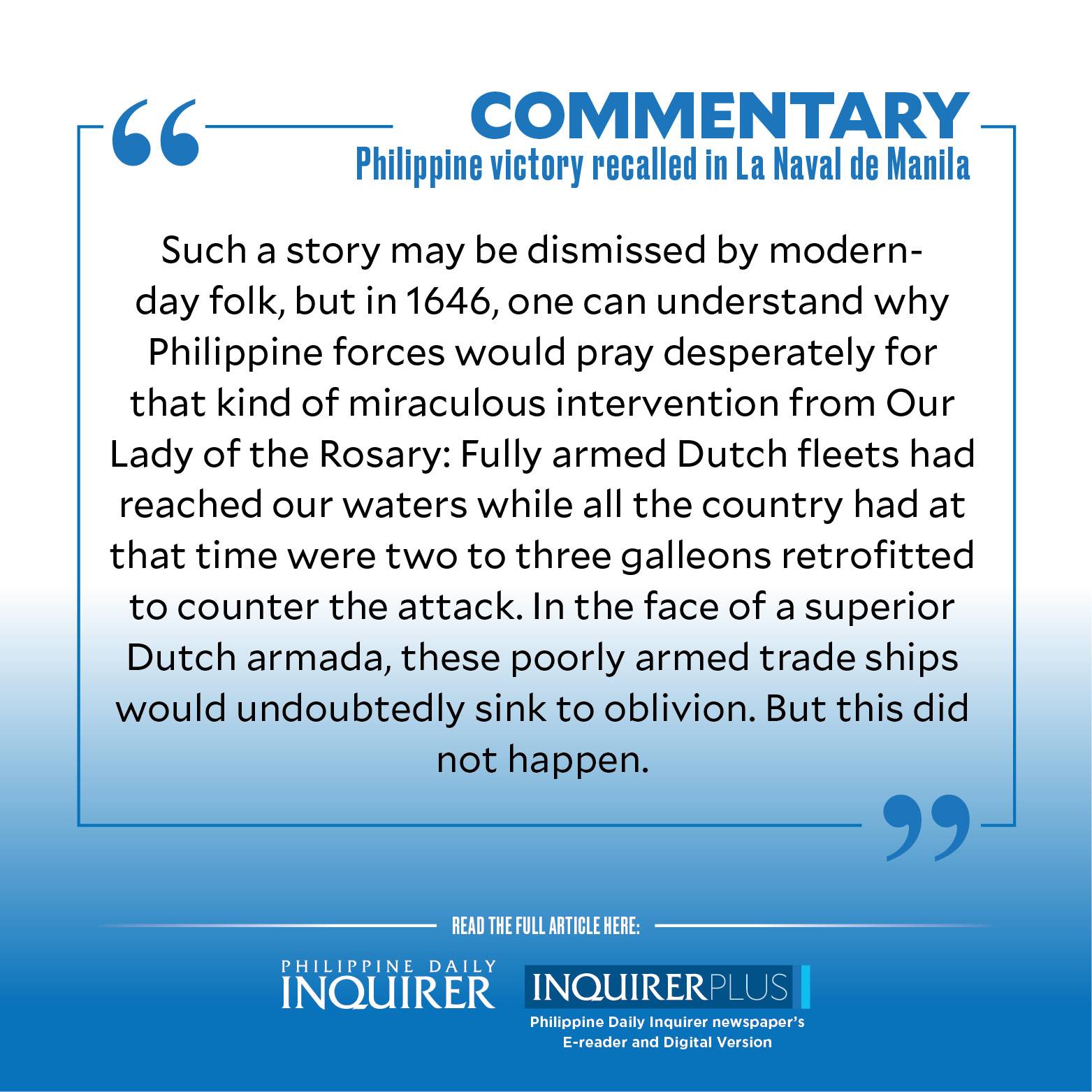
Back in the days of the Manila Galleon Trade in the 1600s, the Philippines found itself in constant guard against forces that could deter the traffic of Asian goods across the seas—from pirate raids to starvation and disease among the crew, and typhoons that belie the Pacific Ocean’s name. People would storm the heavens, begging deliverance for the ships carrying their investments to the Americas.
Then came the Dutch who wanted to monopolize the overseas spice trade, and brought with them a chartered company. In an instant, its trading posts became an intercontinental business enterprise called the Dutch East India Co. While essentially a company, it carried out the interests of the Dutch state, so it enjoyed administrative powers to operate as a quasi-government that could legitimately mint coins, maintain an army, and even wage wars in Southeast Asia.
By 1641, the Dutch had forged a steady partnership with Japan, which turned the Philippines into an eyesore in the long trade route between Batavia and Dejima. No longer satisfied with frustrating only the Manila-Acapulco trade, the Dutch also harassed the Chinese junks supplying the goods, and hijacked the returning galleons from New Spain. Time to get Manila out of the way, which could be done by absorbing the Philippines into the Dutch’s expanding multinational enterprise.
Back in Manila, people found a worthy devotion to Our Lady of the Rosary at the Santo Domingo Church in Intramuros. The object of piety was a late 16th-century ivory image of the Madonna and Child venerated for its reported miracles. The most memorable was an authenticated incident in 1613 when the Blessed Mother was said to have appeared before a wounded man on the coast of Mindoro. The miraculous icon at Santo Domingo Church was said to have mud stains on its vestments showing signs of travel. When the news about the man reached the city, the curious stains finally made sense to the people.
Such a story may be dismissed by modern-day folk, but in 1646, one can understand why Philippine forces would pray desperately for that kind of miraculous intervention from Our Lady of the Rosary: Fully armed Dutch fleets had reached our waters while all the country had at that time were two to three galleons retrofitted to counter the attack. In the face of a superior Dutch armada, these poorly armed trade ships would undoubtedly sink to oblivion. But this did not happen.
Over the course of seven months, five naval battles ensued, all won by Philippine forces with these galleons. The combined Filipino-Spanish crew credited their victories to their devotion to the Great Lady of Manila, whose rosary and litany they prayed before her image on the ship during the expeditions. With a rosary in one hand and a torch in the other, artillerymen fired cannons while shouting “Viva la Virgen!” in salutation. In thanksgiving, the soldiers walked barefoot to Santo Domingo upon reaching land to venerate the miraculous icon. The image later became known as “Our Lady of La Naval de Manila,” after the naval victories.
In 1652, the cathedral chapter of Manila confirmed the Battles of La Naval de Manila as miraculous, and the authorities decreed that a feast must be instituted to remember this miracle annually in honor of Our Lady. Santo Domingo Church still holds this festival every second Sunday of October, which culminates with a huge rosary procession to the church to reenact the vow made by the soldiers in 1646. The church has since preached these victories as a triumph of the Catholic faith in the islands.
But there is something more at stake here. If the Dutch had won the Battles of La Naval de Manila, it is more likely that the Philippines would have ended up being part of the Dutch East India Co., which would later comprise modern-day Indonesia. If that happened, the Philippine islands might have become a mere geographical designation in the northern part of the Indonesian archipelago, like Kalimantan or Celebes. If not for the victories of La Naval, we would have trod a longer road toward self-determination and freedom. Worst, there might be no independent entity at all reaching this far today. By this fact alone, we realize how our nation is indeed beloved by Our Lady of the Rosary.
(The year 2023 marks the 50th anniversary of the proclamation of Our Lady of La Naval as patroness of Quezon City. With the theme “Mahal na Birhen ng La Naval: Pintakasi ng Sambayanang Kristiyano,” the festivities at Santo Domingo Church, Quezon City, began with the enthronement of the miraculous image on Sept. 28, Thursday. The novena Masses will run until Oct. 7, and will culminate with the celebration of the feast day and the traditional “La Naval” procession on Oct. 8, Sunday.)
—————–
Mervin Gonzales Lomague, OP, serves as member of the Cultural Heritage Committee of the Dominican Province of the Philippines.

